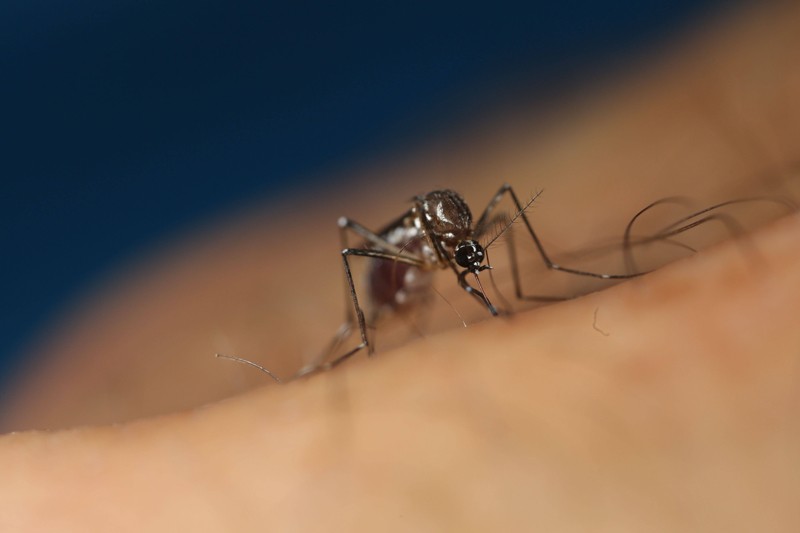Two viruses that cause tropical diseases manipulate their hosts into emitting more of a mosquito-attracting molecule.

Aedes aegypti mosquitoes are drawn to mice infected with Zika or dengue viruses, which increase an infected rodent's production of an odour molecule. (Credit: Chine Nouvelle/SIPA/Shutterstock)
The viruses that cause the tropical diseases Zika and dengue fever can hijack the body odour of their hosts to their advantage, a study shows1. Both viruses alter how mice smell to make the animals more appetizing to hungry mosquitoes.
This tactic could help the viruses to catch a ride to fresh targets, says co-author Gong Cheng, a microbiologist at Tsinghua University in Beijing. Techniques for interrupting this smelly takeover could help to control not only Zika and dengue, but also other mosquito-borne diseases, he says. The research was published on 30 June in Cell.
Finding the stink
Researchers have known for decades that some diseases can change how their hosts smell, says James Logan, a disease-control specialist at the London School of Hygiene & Tropical Medicine. Certain viruses and microorganisms have evolved to use this to their advantage. For instance, plants that are infected with the Cucumber mosaic virus release a molecule that attracts aphids, which the virus uses as a vector to infect new plants2. Scientists have also found that parasites that cause malaria advertise their hosts to passing mosquitoes through changes in body odour3.
To see whether the Zika and dengue viruses had also evolved ways to attract mosquitoes’ attention, Cheng and his colleagues infected mice with one or the other. They then placed infected and healthy mice in separate enclosures and wafted their scent into a mosquito-filled chamber that was connected to both enclosures, to see which group the insects preferred. Around 65–70% of the mosquitoes moved towards the enclosure with infected mice, suggesting that these animals smelled more appealing.
A chemical analysis of the air from each enclosure revealed that infected mice exuded smelly compounds, including an airborne molecule called acetophenone. The researchers found that mice infected with Zika or dengue produced ten times as much acetophenone as did healthy mice. Daubing healthy mice — and a few human volunteers — with acetophenone revealed that mosquitoes were drawn to the smell.
Bacteria that produce acetophenone grow naturally on the skin, but their numbers are usually kept in check by an antimicrobial protein that is secreted by skin cells. However, the team’s studies revealed that the gene responsible for making this protein was less active when mice had dengue or Zika.
As a result, the skin of infected mice was overrun with acetophenone-producing bacteria, making the mice smellier and attracting the attention of hungry mosquitoes. The researchers took armpit swabs from people with dengue and found that humans produce more acetophenone when they’re infected with the virus than when they aren’t. Furthermore, mosquitoes are more attracted to sweaty swabs from people with dengue than to those from uninfected humans.
Weaponized odour
Together, this information suggests that dengue and Zika viruses have weaponized acetophenone to help themselves spread. However, the researchers also found that giving infected mice vitamin A, which is commonly used to treat skin conditions, helped to lower the amount of acetophenone the animals exuded, potentially providing a new way to control the spread of both diseases.
The team now plans to test the use of vitamin A to reduce transmission of dengue in Malaysia, where the disease is endemic.

